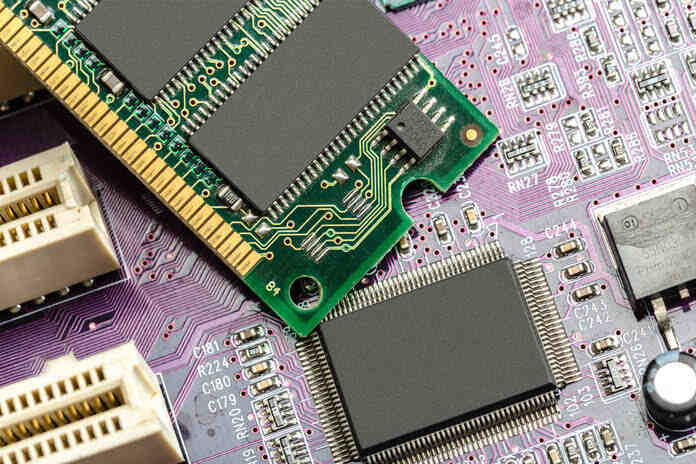Advanced Micro Devices (NASDAQ:AMD) continues to position itself as a leader in high-performance computing and artificial intelligence (AI) through its powerful lineup of AMD processors. From the widely popular EPYC™ series CPUs to the highly efficient Instinct™ accelerators, AMD processors are at the heart of the AI transformation in data centers worldwide. As AMD expands its reach, it has become a key player alongside NVIDIA (NASDAQ:NVDA) in what many analysts now refer to as the “AI duopoly.”
AMD’s Growth in the Processor Market
Advanced Micro Devices (AMD) is expected to see significant growth over the next few years. Earnings per share (EPS) have surged more than 25% this year, and projections suggest they could jump another 50% in 2025. Revenue is also forecast to rise by over 25% next year, crossing $30 billion. Much of this growth can be attributed to the company’s success in both consumer and enterprise markets, powered by its cutting-edge AMD processors.
AMD’s Ryzen and EPYC Processors
AMD processors, specifically the Ryzen and EPYC series, have been instrumental in the company’s rise. The Ryzen desktop processors have challenged Intel (NASDAQ:INTC) in the consumer PC market with their superior performance and affordability. In addition, the Ryzen Threadripper processors target high-end desktop users and professionals, offering exceptional multi-threaded performance for content creation and gaming.
The real game-changer, however, is the AMD EPYC™ processors. Designed for data centers and enterprise-level workloads, EPYC processors offer unmatched performance and scalability. Trusted to power a third of the world’s servers, EPYC processors provide up to 96 core options and can deliver 1.75x the performance per CPU watt, making them ideal for businesses looking to scale their cloud and data center infrastructure.
Expanding into the Data Center with Xilinx and Pensando
AMD’s acquisition of Xilinx in 2022 played a pivotal role in expanding its reach into embedded systems and data centers. Xilinx’s Field Programmable Gate Arrays (FPGAs) and Adaptive Compute Acceleration Platform (ACAP) products added new dimensions to AMD’s product lineup. This acquisition allowed AMD to offer more specialized processing solutions, broadening its appeal to industries that require high-performance computing solutions.
In addition to Xilinx, AMD also acquired Pensando in 2022, which further expanded its presence in the data center market. Pensando’s data processing units (DPUs) and software stacks have complemented AMD’s EPYC processors, offering high-performance solutions for complex workloads in AI, machine learning, and cloud environments.
Instinct Accelerators: Boosting AI Performance
While AMD EPYC™ processors can handle a wide range of enterprise tasks, some AI workloads require even greater processing power. Enter the AMD Instinct™ accelerators. Designed to handle high-performance AI workloads, these accelerators offer exceptional compute performance, large memory density, and high bandwidth memory, making them ideal for large-scale AI models and real-time inference.
The AMD Instinct™ MI300 Series accelerators are particularly well-suited for demanding AI and HPC (high-performance computing) workloads. With their ability to support specialized data formats and accelerate large models, Instinct accelerators have become the go-to choice for enterprises aiming to stay ahead in the AI race.
The AI Duopoly: AMD vs. NVIDIA
NVIDIA (NASDAQ:NVDA) has long been the dominant player in the AI and GPU markets, but AMD has emerged as a formidable competitor. Together, these companies form what industry experts are calling the “AI duopoly.” Both AMD and NVIDIA are at the forefront of the AI revolution, developing new generations of their best processors every 18 months, similar to the rapid innovation cycle of smartphones.
NVIDIA CEO Jensen Huang recently noted the overwhelming demand for NVIDIA’s new Blackwell GPUs, a confirmation that AI growth is still accelerating. With data centers expected to grow exponentially in the coming decade, AMD is well-positioned to capture a significant share of this market. As Oracle founder Larry Ellison highlighted, the number of data centers could expand from 162 to as many as 2,000 over the next decade. This presents a massive opportunity for both AMD and NVIDIA to participate in the build-out of GPU-accelerated designs.
Conclusion: The Future of AMD Processors in AI
As the AI revolution continues to unfold, AMD processors are set to play a critical role in powering next-generation data centers and AI workloads. With its EPYC CPUs and Instinct accelerators, AMD has established itself as a leader in the field of high-performance computing, standing shoulder to shoulder with NVIDIA in the race to dominate the AI industry. With strong growth projections and innovative technology, AMD processors are poised to drive the company forward into the future.
Featured Image: Unsplash









